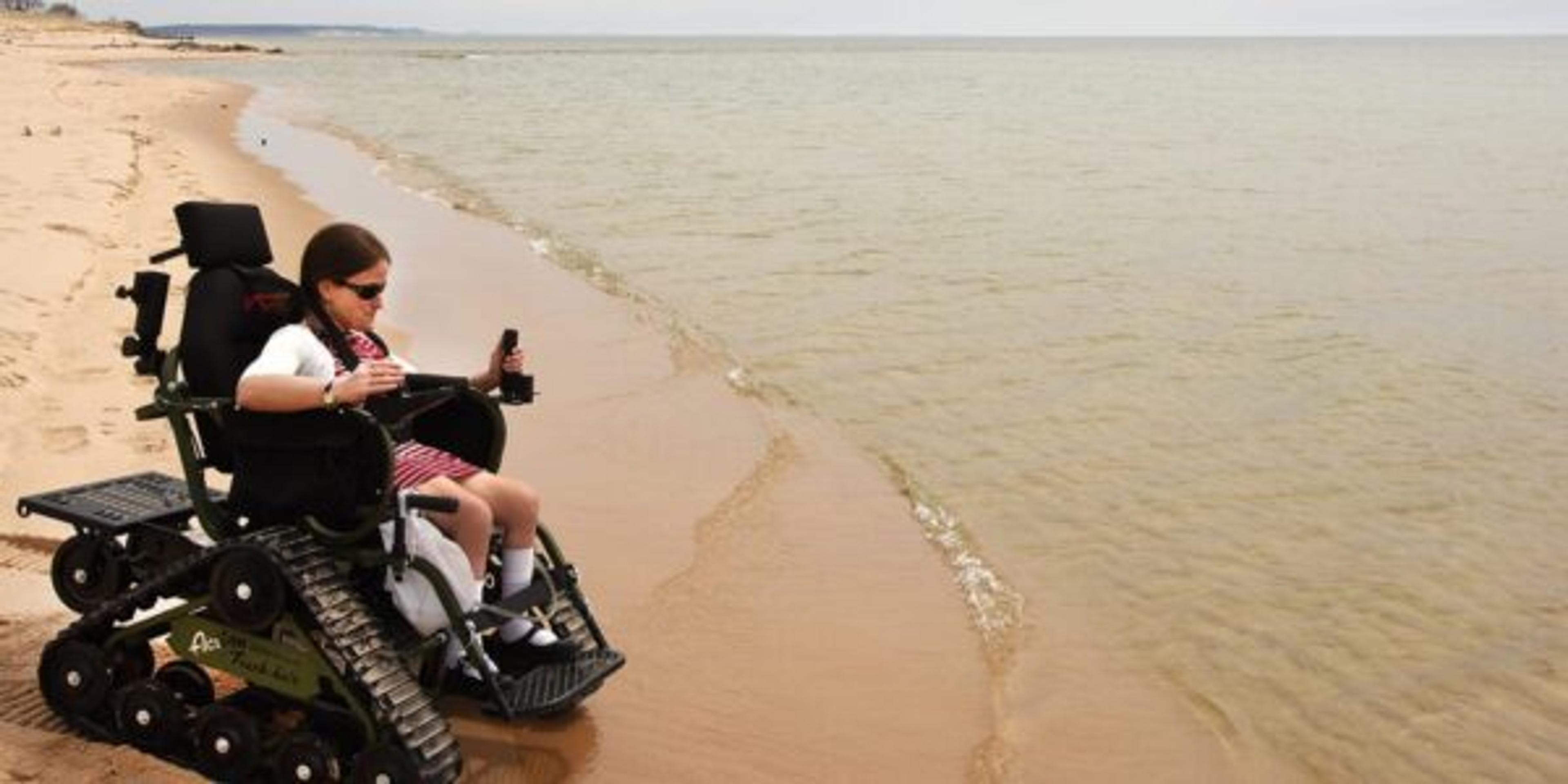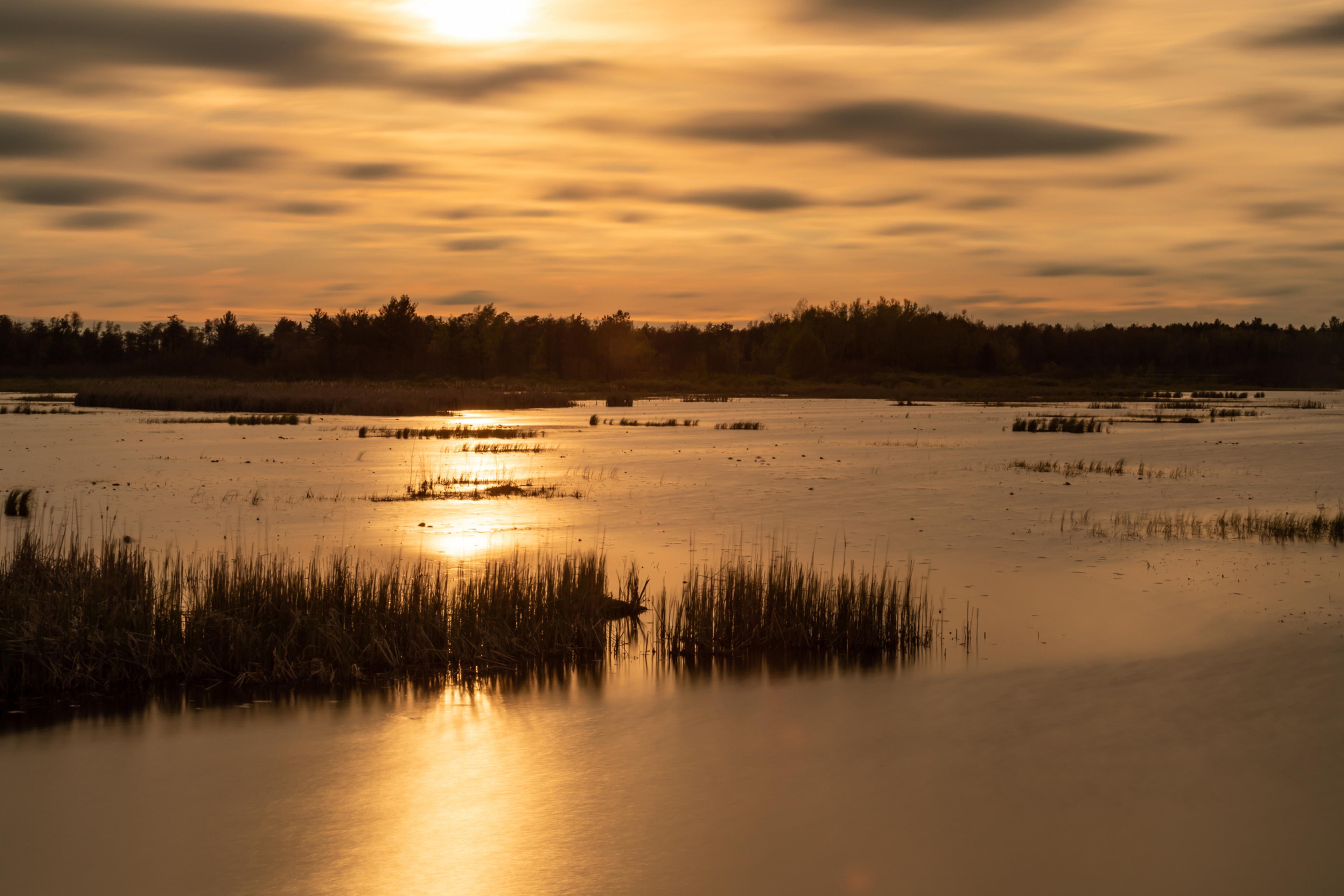How to Enjoy Ludington’s New Accessible Water Trail
Shandra Martinez
| 3 min read

One of the most popular waterfront parks and campgrounds in the Michigan state park system is adding another feature this summer that outdoor adventure enthusiasts of all abilities are sure to love. Ludington State Park hopes to open its new accessible water trail for campers and daytrip visitors by July 1.
This sprawling state park, just north of town and sandwiched between Lake Michigan’s shoreline to the west and the inland Hamlin Lake to the east, is the perfect spot for all water-lovers, whether you prefer to canoe, kayak, use a stand-up paddleboard, or just float down the park’s river in an inflatable tube. Ludington State Park has long been known for its four-mile canoe and kayak trail that sends paddlers out for some of that distance on the large Hamlin Lake. In contrast, the new accessible water trail will:
- Be shorter, at just two miles
- Start at the park’s new universal access kayak launch
- Be an easier, gentler route staying largely within the protected, smaller Lost Lake area adjoining Hamlin Lake
- Have signage directing paddlers along the route
It will be a great spot for people who need an accessible route. But it also will be a good fit for people new to the sport and families teaching youngsters how to paddle. The Lost Lake area is shallower, calmer and generally less windy than Hamlin Lake.
For campers and day visitors
Park officials believe the new accessible water trail will be used by state park campers, locals, and those just visiting the park for the day. “The addition of this new accessible water trail should be a draw to campers and day visitors alike,” said Park Manager Jim Gallie. “While we’ve always encouraged paddle sports on Hamlin Lake, Ludington State Park was the first to put in a canoe trail back in the early 1990s, and this trail will expand the paddling opportunities at the park.
“This new two-mile loop is great for beginners because of its shorter length and because it is more protected from the strong winds and waves that Hamlin Lake often sees. The intermediate four-mile canoe trail at the south end of the park requires the navigation of some open water on the lake that can make it more challenging.”
Adding to its accessible features
The new water trail is just the latest accessible feature available at Ludington State Park. Thanks to its partnership with the nonprofit Friends of Ludington State Park group, the park last year acquired its first Action Track Chair and a second chair is expected to be available this summer. These chairs allow people with disabilities to explore parts of the park they may not be able to otherwise access. This includes wooded trails and the park’s large beach area. People who used the chair last year commented on how well it drove over the sand. The park’s Action Track Chairs are free to use and can be reserved in advance.
Gallie said the chairs are just one piece of the park’s commitment to be as accessible as possible. He said the nonprofit also partnered with the park to purchase a SeeCoast viewer for the Skyline Trail. This allows people who are color blind to see a panoramic view in color from this high point in the park.
“And that is in addition to past improvements like the universal kayak launch installed at the Hamlin Lake beach in September 2021, an accessible playground at the Hamlin Lake beach area installed in September 2018, and the accessible beach walkways installed at the Lake Michigan beach and to be installed at Hamlin Lake’s beach this year,” Gallie said.
Related:
Photo credit: Ludington CVB





